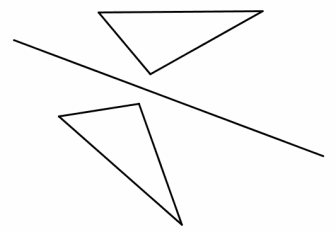Engage NY Eureka Math Geometry Module 1 Lesson 14 Answer Key
Eureka Math Geometry Module 1 Lesson 14 Example Answer Key
Discussion
You just demonstrated that the line of reflection between a figure and its reflected image is also the perpendicular bisector of the segments connecting corresponding points on the figures.
In the Exploratory Challenge, you were given the pre-image, the image, and the line of reflection. For your next challenge, try finding the line of reflection provided a pre-image and image.
Example 1.
Construct the segment that represents the line of reflection for quadrilateral ABCD and its image A’B’C’D’.
What is true about each point on ABCD and its corresponding point on A’B’C’D’ with respect to the line of reflection?
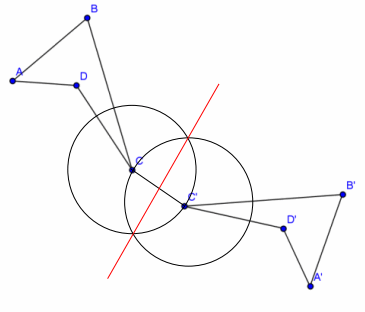
Answer:
Each pair of corresponding points is equidistant from the line of reflection.
Notice one very important fact about reflections. Every point in the original figure is carried to a corresponding point on the image by the same rule—a reflection across a specific line. This brings us to a critical definition:
REFLECTION: For a line l in the plane, a reflection across l is the transformation rl of the plane defined as follows:
1. For any point P on the line l, rl(P)=P, and
2. For any point P not on l, rl(P) is the point Q so that l is the perpendicular bisector of the segment PQ.
If the line is specified using two points, as in \(\overleftrightarrow{A B}\), then the reflection is often denoted by \(\boldsymbol{r}_{A \bar{B}}\). Just as we did in the last lesson, let’s examine this definition more closely:
→ A transformation of the plane—the entire plane is transformed; what was once on one side of the line of reflection is now on the opposite side;
→ rl(P)=P means that the points on line l are left fixed—the only part of the entire plane that is left fixed is the line of reflection itself;
→ rl(P) is the point Q—the transformation rl maps the point P to the point Q;
→ The line of reflection l is the perpendicular bisector of the segment PQ—to find Q, first construct the perpendicular line m to the line l that passes through the point P. Label the intersection of l and m as N. Then locate the point Q on m on the other side of l such that PN=NQ.
Examples 2–3
Construct the line of reflection across which each image below was reflected.
Example 2.
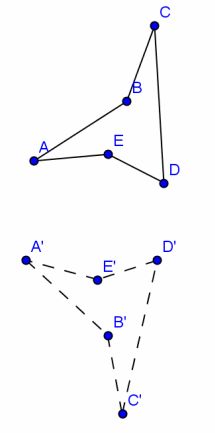
Answer:
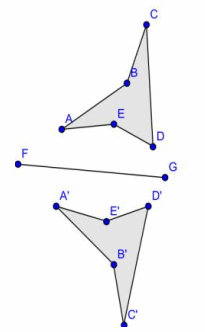
Example 3.
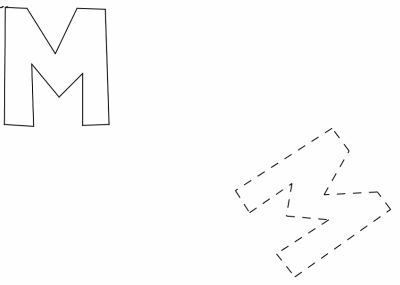
Answer:
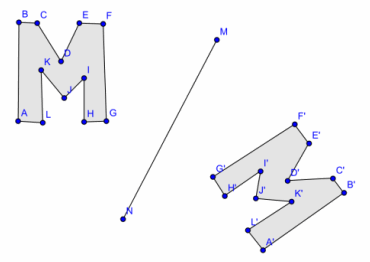
Next, students complete a reflection using circles. The teacher may wish to go through the steps with students or give the steps to students and have them work independently. As students work, encourage them to think and discuss why using circles allows them to construct a reflection. Remind them of what they discovered in the Exploratory Challenge as well as Euclid’s use of circles when constructing equilateral triangles. Consider also asking students to confirm the properties of reflections and conclude that they preserve the lengths of segments and the measures of the angles of the figures being reflected.
You have shown that a line of reflection is the perpendicular bisector of segments connecting corresponding points on a figure and its reflected image. You have also constructed a line of reflection between a figure and its reflected image. Now we need to explore methods for constructing the reflected image itself. The first few steps are provided for you in this next stage.
Example 4.
The task at hand is to construct the reflection of △ABC over \(\overline{D E}\) . Follow the steps below to get started; then complete the construction on your own.
1. Construct circle A: center A, with radius such that the circle crosses \(\overline{D E}\) at two points (labeled F and G).
2. Construct circle F: center F, radius FA, and circle G: center G, radius GA. Label the (unlabeled) point of intersection between circles F and G as point A’. This is the reflection of vertex A across \(\overline{D E}\) .
3. Repeat steps 1 and 2 for vertices B and C to locate B’ and C’.
4. Connect A’, B’, and C’ to construct the reflected triangle.

Answer:
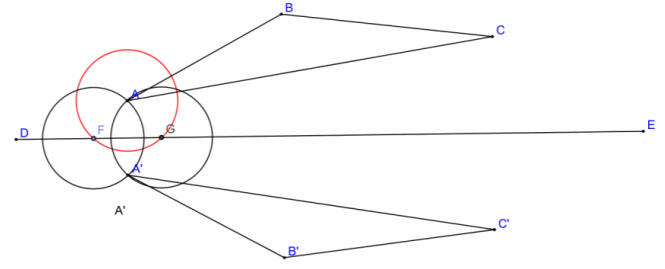
Things to consider:
When you found the line of reflection earlier, you did this by constructing perpendicular bisectors of segments joining two corresponding vertices. How does the reflection you constructed above relate to your earlier efforts at finding the line of reflection itself? Why did the construction above work?
Example 5.
Now try a slightly more complex figure. Reflect ABCD across \(\overline{E F}\) .
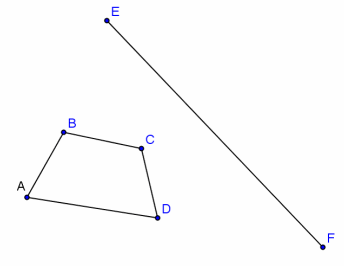
Answer:

Eureka Math Geometry Module 1 Lesson 14 Exploratory Challenge Answer Key
Exploratory Challenge
Think back to Lesson 12 where you were asked to describe to your partner how to reflect a figure across a line. The greatest challenge in providing the description was using the precise vocabulary necessary for accurate results. Let’s explore the language that yields the results we are looking for.
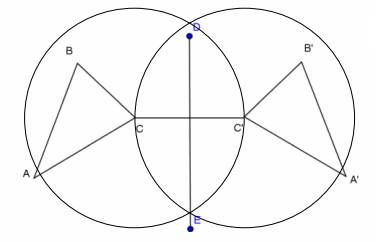
△ABC is reflected across \(\overline{D E}\) and maps onto △A’B’C’.
Use your compass and straightedge to construct the perpendicular bisector of each of the segments connecting A to A’, B to B’, and C to C’. What do you notice about these perpendicular bisectors?
Label the point at which \(\overline{A A’}\) intersects \(\overline{D E}\) as point O. What is true about AO and A’O? How do you know this is true?
Answer:
AO=A’O. I constructed the perpendicular bisector, and O is the point where the perpendicular bisector crosses \(\overline{A A’}\), so it is halfway between A and A’.
Eureka Math Geometry Module 1 Lesson 14 Problem Set Answer Key
Construct the line of reflection for each pair of figures below.
Question 1.

Answer:
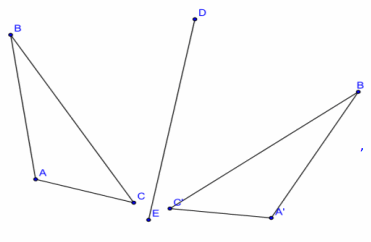
Question 2.
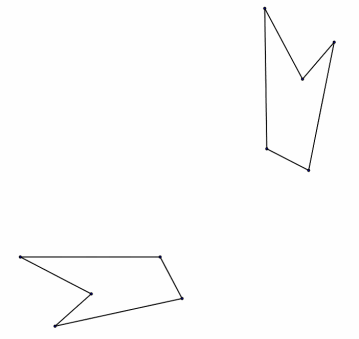
Answer:

Question 3.

Answer:
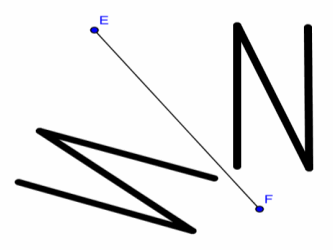
Question 4.
Reflect the given pre-image across the line of reflection provided.
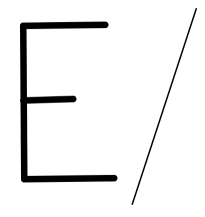
Answer:
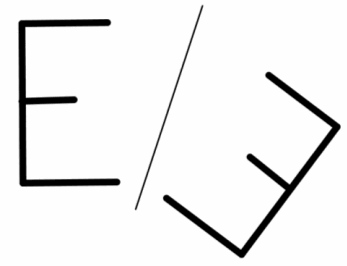
Question 5.
Draw a triangle ABC. Draw a line l through vertex C so that it intersects the triangle at more than just the vertex. Construct the reflection across l.
Answer:
Answers will vary.
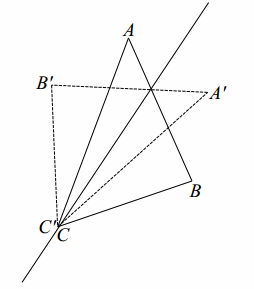
Eureka Math Geometry Module 1 Lesson 14 Exit Ticket Answer Key
Question 1.
Construct the line of reflection for the figures.

Answer:
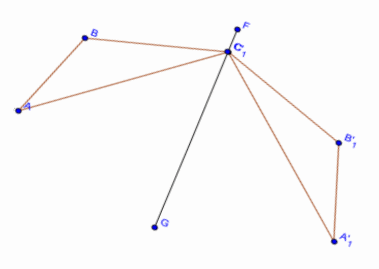
Question 2.
Reflect the given pre-image across the line of reflection provided.
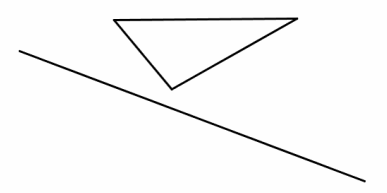
Answer:
